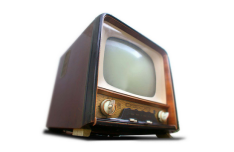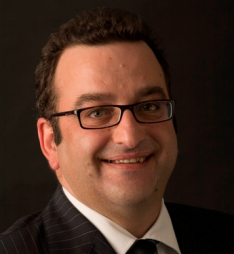Were there any real winners in the last TV ratings year?
 While all the TV networks are celebrating their ratings achievements over the past year Nic Christensen asks whether an 11% prime time audience drop and increased competition from video streaming services means there are no real winners.
While all the TV networks are celebrating their ratings achievements over the past year Nic Christensen asks whether an 11% prime time audience drop and increased competition from video streaming services means there are no real winners.
The TV networks have been busy pushing their 2015 achievements over the last 48 hours, with the official ratings year now done and dusted.
But asked to look past the spin and say who can claim to be the real winner Maxus CEO Mark McCraith quips: “Everyone’s a winner – assuming you look at the percentages and not the actual numbers.”
Seven won in total people – again; Nine has won the key advertiser demographics – again; and Ten was the only commercial TV network to lift its primary channel in 25-54s and total people share.
Asked about those results McCraith says: “Everyone’s a winner this year… at least from whatever perspective they are looking at.
“I’m serious,” he says taking his tongue out of his cheek for a moment. “If you are Ten you finally have some ratings back to be more sellable, if you’re Nine you are number one in what matters most and if you are Seven you can talk to the big end of town and say that you are a leader.”
However the actual numbers tell a different story. According to media consultancy Fusion Strategy, peak night television audiences for 2015 were down 9.15 per cent for the year. Free to air overall was down 9.78 per cent while, more worryingly for media buyers, the three major TV Networks Seven, Nine and Ten were down 11.26 per cent collectively in peak night live viewing.
So what caused the declines?
Fusion Strategy’s Steve Allen argues the question of who won is increasingly complicated, given the declines in TV audiences this year.
“This is the first year of double digit declines, we’ve seen the audience fall in previous years but not by this much,” says Allen. “We should be very concerned about the drop but there were explanations and they (the TV networks) ‘fessed up to it eventually,” he added, referring to Seven West Media boss Tim Worner’s admissions during the upfronts this year.
Asked why the networks suffered so badly this year Allen explained: “It was to do with programming and counter programming, but there is no question that video streaming services took some market away from them and our best guess is about half the drop – and that drop is around 10 per cent – is due to SVOD and the rest is due to programming.”
That drop is particularly apparent when you look at the live television viewing figures by channel.
The drop on the main channels of Seven and Nine from 2014 to 2015 is clearly apparent, particularly in the 16-39 and 18-49 demographics, Ten rose but from a low base, while pay-TV holds up in total people but suffers in the demos.
This is evidenced in Fusion’s analysis of the peak night live average metro audience for the various channels, which shows Seven’s main channel in total people falling from 858,000 in 2014 to 763,000 in 2015:
What does it mean for the ad industry?
The fall in television audience is very much on the minds of senior media buyers.
“It does worry me,” says Simon Ryan CEO of media agency Carat which claims $1.3bn in media billings.
“It is new entrants to the market, it is people looking at Netflix with 1m subscriber base, that has taken away a big chunk of viewing, a lot of consumers are being a lot more cross-media orientated in their thinking and downloading their own content.
They are now finding bespoke media content for themselves and not just accepting what is on TV. They are chasing their own content to suit their own needs and their own interests.”
Rival agency CEO Peter Horgan, who heads the $1.33bn OMD, agrees describing the decline as an adjustment.
“It is an adjustment we need to react to in terms of the media and marketing mix,” said Horgan. “It is within the expectations of audience change within a digital and SVOD world.”
Talk to those on the TV trading floor and the perspective on who “won” the TV ratings is very clear.
Match Media trading director Theo Zisoglou says: “All three networks would agree it’s been a tough year for TV with audience declines across most major demographics, so I’m not sure any of them would consider it a ‘win’ in 2015.
“We have seen a major shift in how viewers are now engaging with TV and video content, and that is to watch what they want, when they want. The SVOD services definitely had an impact on TV audiences but was not the only factor for the decline in audience,” he says.
“A combination of not much new programming, a change in viewing habits (catch up, SVOD, short form content), similar formats being put up against each other (eg, Reno Rumble v House Rules) and the under-performance of US series meant that viewer decline was inevitable.”
Can catch-up save TV?
This shift towards IPTV is clear although the free-to-air TV industry is resistant to drawing causal links between the drop in TV audiences and the growth of streaming services.
Last month a ZenithOptimedia study claimed 15 per cent of respondents were watching no broadcast TV at all in favour of SVOD, findings which drew a strong response from FreeTV CEO Julie Flynn.
However, the signs of growth are clear. A quarterly study by independent research company Edentify of more than 2400 respondents on their IPTV usage shows clear lifts in engagement and usage for the SVOD players Netflix, Stan and Presto, as well as all the free-to-air network’s catch-up services.
 Edentify’s research, called IPTV in Australia, also shows that the number people reporting desktop viewing is falling while smartphone and internet TV usage are growing steadily. “These results shows an increase in the use of both mobile devices (smart phones and tablets) plus the use of devices which connect to your TV such as Apple TV and Fetch,” says Dan Banyard, managing director of Edentify. “And this is only going to increase further with the launch of Telstra TV and Foxtel Broadband.”
Edentify’s research, called IPTV in Australia, also shows that the number people reporting desktop viewing is falling while smartphone and internet TV usage are growing steadily. “These results shows an increase in the use of both mobile devices (smart phones and tablets) plus the use of devices which connect to your TV such as Apple TV and Fetch,” says Dan Banyard, managing director of Edentify. “And this is only going to increase further with the launch of Telstra TV and Foxtel Broadband.”
The problem for free-to-air television is measuring that audience across all those devices, concedes CEO of TV audience measurement service Oztam Doug Peiffer.
Peiffer is charged with implementing a new measurement system that will help provide cross media measurement.
“This adds a couple of percent to the viewing figures – that is what we are projecting,” says Peiffer, whose cross media measurement service was scheduled to launch by the end November, but looks set to be delayed into 2016.
“When I say it is only a few percent of the total there are some programs that are getting double digit increases and that is where it becomes very important to capture all that viewing.”
The Oztam boss defends the delay noting the technical difficulties of reporting video views across a plethora of services and platforms.
“We are still working with the broadcasters to plug into their players and we have to plug in across each operating system Android, iOS, gaming devices etc,” he says.
“It has taken us a little bit longer (than we would have liked) across each broadcaster and we are now collecting millions of minutes each day. We are getting closer to that point where we can start to release first line reporting.
“If I can get it out before Christmas we will definitely try, but if not it will be first in the new year.”
 Oztam is subject to its TV network masters, and right now the challenge appears to be appeasing them all.
Oztam is subject to its TV network masters, and right now the challenge appears to be appeasing them all.
“We have been collecting millions of minutes for the last year it is just getting full coverage so no one feels like they are disadvantaged and that’s what we are getting to now,” he says.
“This is measuring catch up services and live streaming services to the broadcasters – we are plugging in to Seven, Nine, Ten, ABC, SBS and Foxtel.
“We show declines (in Oztam) in certain demographics but we believe that those demographics are watching on other devices and using these (catch-up) services. It is important.”
The content conundrum
Even if the TV networks nail the cross media measurement challenge do the buyers have confidence in them meet the challenge posed by the likes of Netflix, Stan and Presto?
“In regards to content they need to offer new and original programming that is not available anywhere else to give the viewers a reason to tune in,” argues Match’s Theo Zisoglou.
OMD’s Horgan and Maxus’s McCraith agree but note television has an advantage over other media.
Asked if winning the ratings year matters Horgan responds: “It doesn’t matter as much as it used to.
“It used to be between TV and newspapers and it was all relative but the reality is we still spend a lot of money in television. These are things we monitor closely. What is interesting is that demand for TV, in spite of audience declines, remains hot – it still has unique attributes.”
McCraith too is clear about the benefit of that unique attribute which is audience reach.
“This year they have finally worked out they need to address the decline in audiences,” he says. “The TV Networks are trying much harder to get that.”
But what happens if traditional television declines again next year?
Even with further declines it will still be the most powerful medium in the country – just not as powerful as it was in 2015,” says McCraith.
“It is still that far ahead of anything else.”
Nic Christensen is deputy editor of Mumbrella










It’s really not rocket science. Consumers want to watch what they want, when they want, on the screen they want. Broadcasters/programmers/publishers/whatever you want to call them need to ensure their content is delivered to every screen in a way they can measure and monetise. Advertisers and agencies need to ensure their ads are being seen by their target audiences, regardless of the screen. TV will continue to be a key part of that ecosystem, regardless of the growth of AVOD and SVOD services.
User ID not verified.
Misleading at best. The total audience for terrestrial TV (including time shifted viewing) _increased_ last year.
And the SVOD figures have to be considered in the light of the collapsing market for video rentals (which it essentially replaces), which had no advertising at all.
User ID not verified.
What we are witnessing is kind of Ouija board forecast without odds, for the desperation stakes of television. Those who would extract gold without the necessity of planned mining, preparation and future developments, have all but scraped the seam to bedrock.
The resultant panic has caused a heated battle for ratings with the same careless attitude to good business, or at least, the business of good television. To quote Kasper Gutman in Maltese Falcon (and you don’t get this often) [quote] “In the heat of action, men are likely to forget where their best interests lie.”[unquote]
User ID not verified.